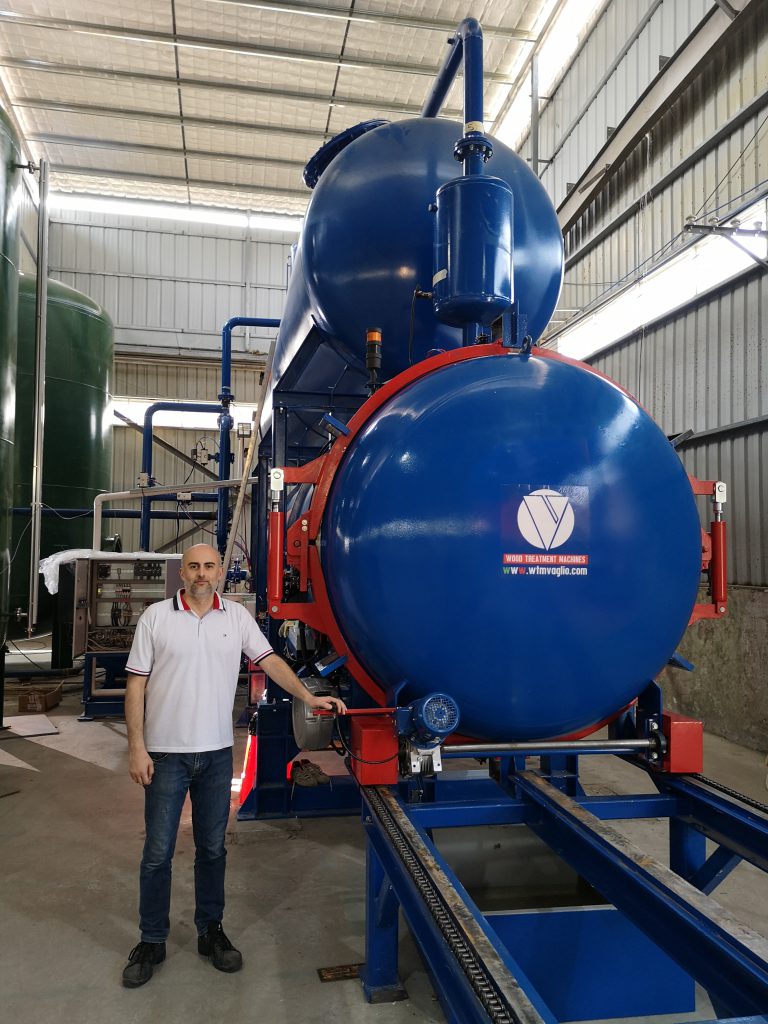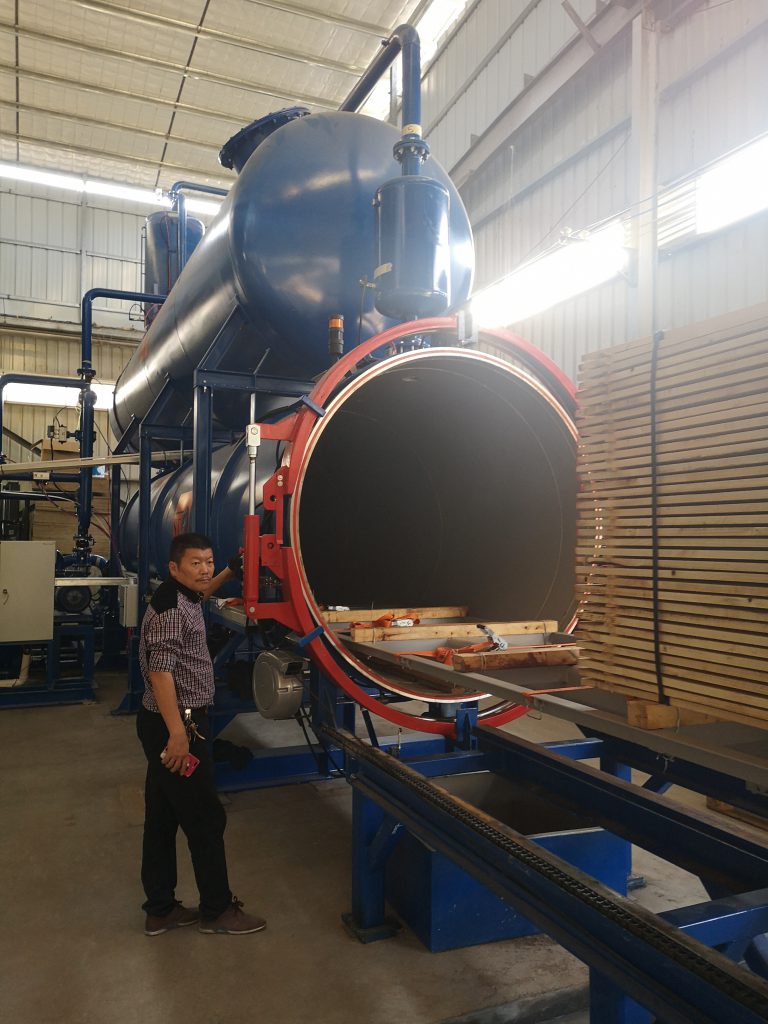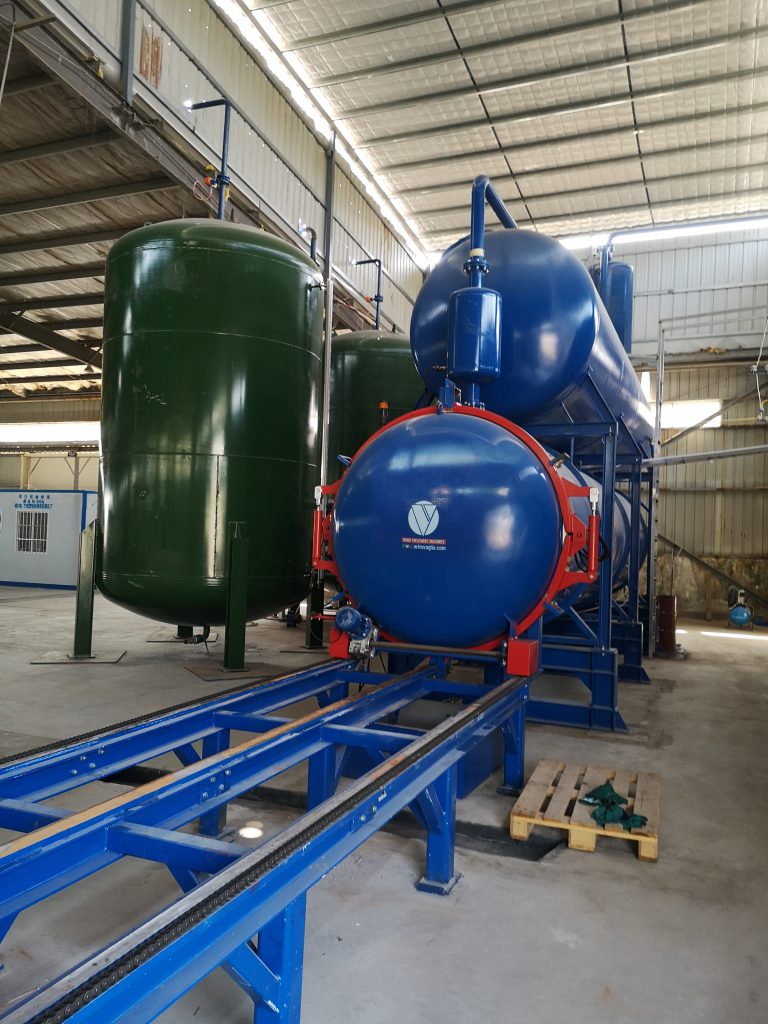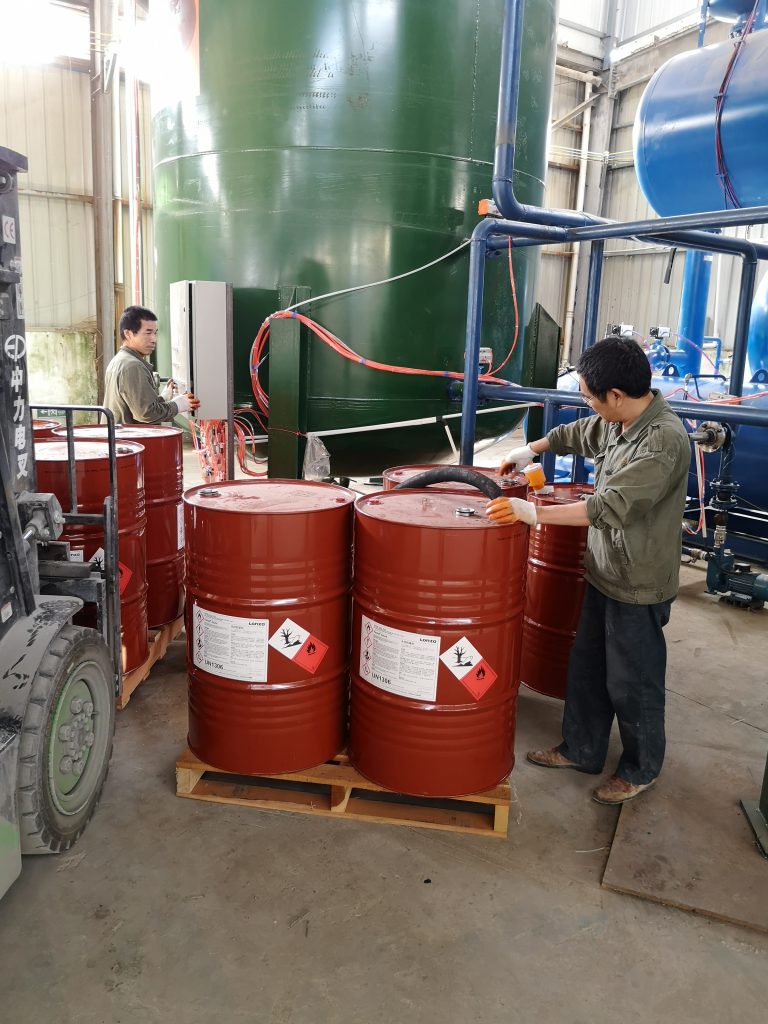We have delivered with satisfaction the first LOSP impregnation treatment plant for a large company in China.
The installation
Our team of engineers and specialized technicians went to China to carry out the installation, coordinating the team of Chinese technicians. Training for the operators was also carried out. The last phase concerned the testing phase of the machinery, using chemical preservatives and the customer's wood.
The plant is equipped with an automated door, and 2 additional storage tanks.
The control software records the treatment cycles, releasing a diagram and a report with the data for each cycle. One of the fundamental data is the absorption (liters/m3) of preservative.
The wood treated with our plant has passed the strict quality controls required by the TPAA association for sale in the Australian market.
The LOSP treatment
The name LOSP identifies a solvent based treatment, which contains fungicides and insecticides.
The wood is impregnated with "eco-frendly" preservatives, i.e. low environmental impact 🌱 which guarantee resistance to the attack of termites and fungi.
It is used for the treatment of wooden structures up to use class 3, i.e. where the wood is outside but not in contact with the ground.
The key advantage of the LOSP treatment process is that it does not cause any change in moisture content, size or structural classification of wood products.
For this reason it is ideal for the treatment of wood products that are finished in size, with tight tolerances, such as window frames, cladding and cladding panels. Likewise, it is also ideal for structural or engineered timber products (such as LVL and glulam products) that rely on a low moisture content for structural classification.





